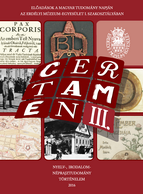
Képmelléklet
List of illustrations to the articles of the following authors: Pozsony Ferenc, T. Szabó Csilla, Tőtős Áron, Ferenczi Szilárd, Wellmann László, Murádin János Kristóf.
More...We kindly inform you that, as long as the subject affiliation of our 300.000+ articles is in progress, you might get unsufficient or no results on your third level or second level search. In this case, please broaden your search criteria.

List of illustrations to the articles of the following authors: Pozsony Ferenc, T. Szabó Csilla, Tőtős Áron, Ferenczi Szilárd, Wellmann László, Murádin János Kristóf.
More...
The file contains the abreviations used both in the article and in the indexes and the indexes of the names, of the geographical places and of the institutions that are to be found in the articles.
More...
This article presents three dramatics adaptations of the same historic material: the medieval Hungarian aristocrat Bánk (ger. Bancbanus, cro. Benko Bot) appears as the hero in historical plays by the Hungarian author József Katona, German-Austrian Franz Grillparzer and Croatian Franjo Marković. Although these three authors differ greatly in their aesthetic and political positions, they nevertheless share a joint goal: to prompt reflection on the joint (super)national state design against the backdrop of nation building in the Danube Monarchy and the related strengthening of centripetal tendencies.
More...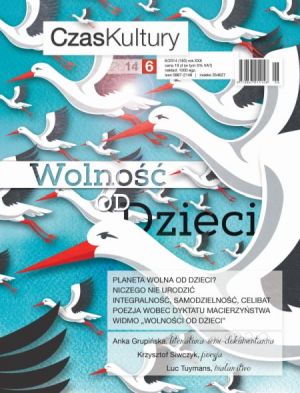
The text is devoted to an analysis of the phenomenon of conversation. The author analyzes two volumes of interviews: Anka Grupińska’s "Still in a Circle", and "Izraeli szellem ma" by János Kőbányai, both of which explore the significance of talking about the Holocaust and the manner in which it can be done. The positions of the two writers demonstrate that on the map of post-Holocaust genres, one of the most important is the interview/conversation, which allows one to view another’s untouchable history and experience it without disturbing it.
More...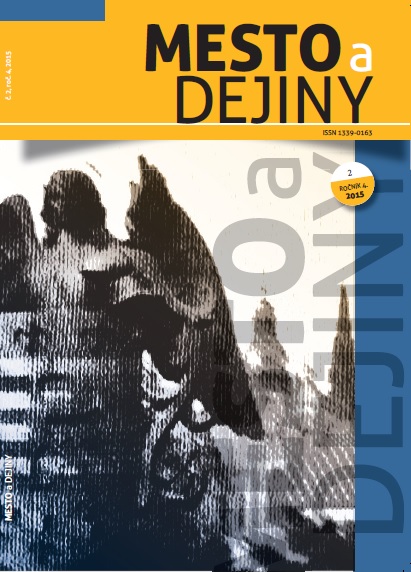
The study presents a brief biography of university teacher, scientist and intellectual Carl Johannes Zinner († around 1810). His activities are connected in a special way with Košice, he worked at the Royal Academy. Interest in the modern history of the United States led him to make contact with Benjamin Franklin. In consideration of this he obtained a special position in the history of Hungary and belonged to the important persons of history at the late 18th century. The study maps Zinner's life, work as well as scientific and political thoughts of Zinner to the recent or past events.
More...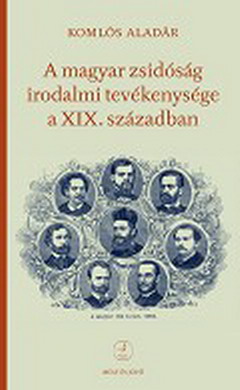
Does a Hungarian Jewish Literature exist? Aladár Komlós analyses and approves this question in this monograph, written in the early 1940ies. After the Shoa the author reviewed his opinion and not even made an attempt to publish his work. The first edition of this monograph has been published posthumous, in 1996.
More...
One can establish mutual influences in the Renaissance Hungarian and Polish literatures. The influences are due to the personal contacts of humanist poets and thinkers and due to the experience these people got in Poland and Hungary respectively. The literary interactions are manifested in various phenomena: translations, paraphrases, dedications, poems written on special occasions, and Polish and Hungarian topics.
More...
Literary evolution in Hungary and Poland has had very much in common since the very beginning up to the present, but the division into epochs within each national literature has always been considerably different. Political changes played an important part in distinguishing various epochs of Hungarian literary history in the scholarship. Certain scholars combine the historical periods with literary movements or with spiritual movements. In Polish and Slovenian periodization literary movements dominate. The term Enlightenment and Positivism are also current. The latter corresponds to Realism and Naturalism in Hungarian and Slovenian criticism. The period between 1918-1939 does not have a common name in Hungary and Poland, whereas it is referred to as Expressionism and Social Realism in Slovenia. The comparative periodization of literatures in East-Central Europe can make literary scholars’ views more exact in cases when opinions differ in stating time limits for different periods. Such a comparison may contribute to a more thorough understanding of the “phase delays” that may have occured between these literatures.
More...
This article deals with the mutual images and stereotypes of Slovaks and Hungarians presented in Czechoslovak, Slovak and Hungarian history textbooks published between 1918 – 1989. The textbooks employed the same principles while creating the image of the Self and the Other. In all cases the authors of the textbooks opted for creating a positive image of their own nation by employing images of its cultural and moral superiority, while the Others were characterized as immoral traitors on a lower degree of civilisational development. Narratives presented in official history textbooks reflect the political agenda, desirable values and the efforts the political elites made in order to create a collective identity of the citizens of the state and to develop the loyalty of subjects to the country they live in. Thus, every change of political regime brings with it the necessity to reinterpret the past and to reconstruct the national history – as such, in which the current state, or the current ambitions and political programs of the elites would be seen as the natural, legitimate and most desirable result of historical development.
More...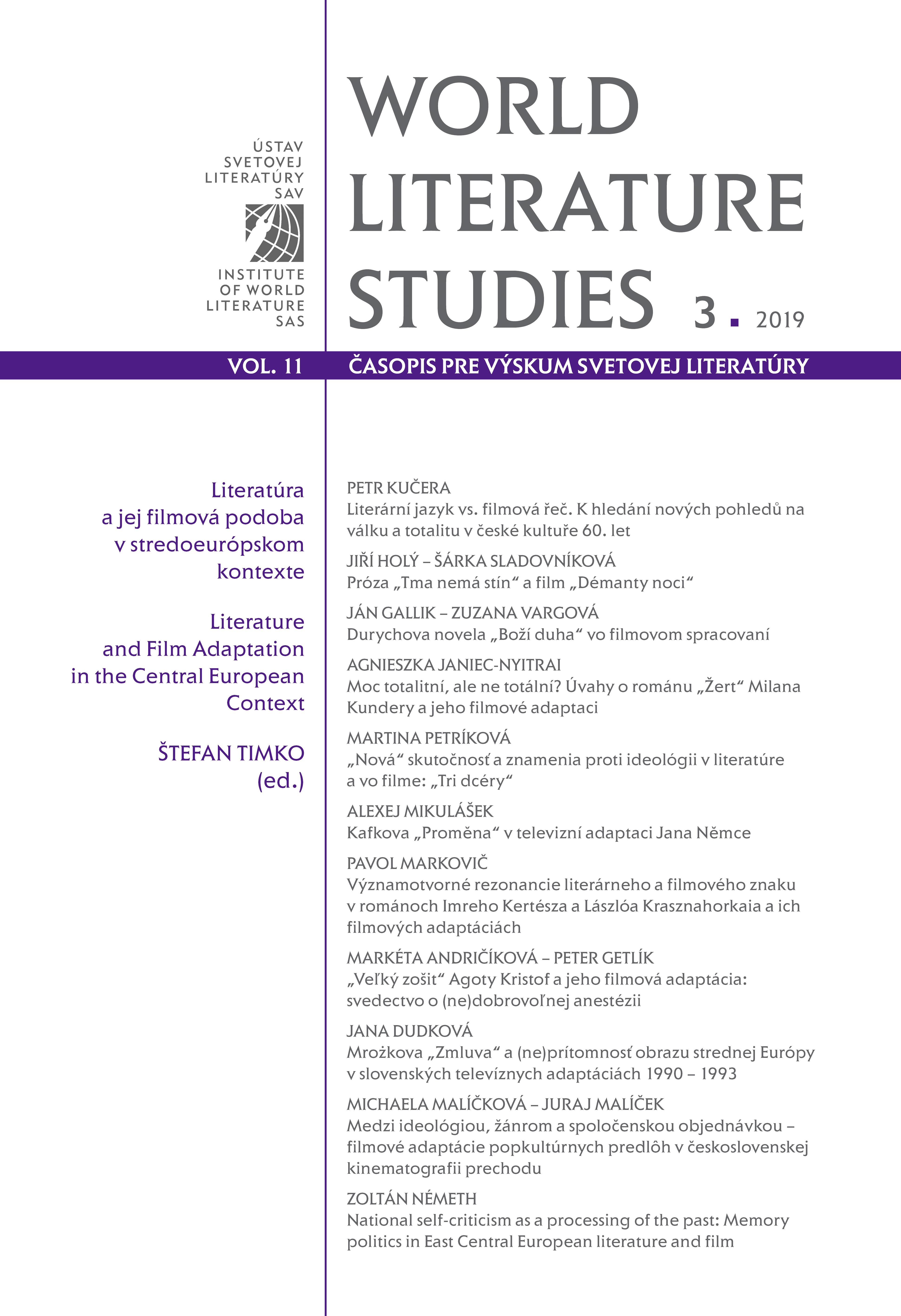
In post-communist Central European countries the interpretation of the past is still oftengenerated by myths, self-pity, martyrdom, and the denial of one’ s own fault. Vergangenheitsbewältigung,a conscious, critical examination of the historical past, which is present inGerman language and literature, is almost absent in Hungarian, Slovak, Polish and Czechpolitics, culture, literature and films. The present study deals with cultural and political strategies,applied in films and literary texts of V4 countries, which critically process taboos,related to the national past. The study examines the issue of the historical self-criticism inPolish, Czech (Josef Urban’ s novels Habermannův mlýn – Habermann’ s Mill, 2001 and 7 dníhríchů – The 7 Days of Sin, 2012 and their film adaptations directed by Juraj Herz and JiříChlumský) and Hungarian (Tibor Cseres’ s novel Hideg napok – Cold Days, 1964 and its 1966film adaptation directed by András Kovács) literature and films.
More...
The discourse on the writing of national literary histories is still in progress due to the postcolonial and transnational turn. In the frameworks of these literary theories, the meaning of national has been reshaped by focusing on the territorial, ethnic and language borders of contemporary literature. The theory of literary history writing had to face the issues of defining the phenomenon of migrant, emigrant and minority literature. A new Hungarian book titled Kik vagytok ti? Kötelező magyar irodalom – Újraélesztő könyv (Who Are You? Compulsory Hungarian Literature – A Revitalizing Book) (2019), also evoked a debate concerning the theoretical issues of Hungarian literary history writing. In this debate, not only the author and his critics confronted but also the critics with one another. By analysing the critiques and the author’s answers, the fundamental questions of the national literary history writing can be identified. With this metadiscursive approach, I aim to present the current state of Hungarian national literary history writing focusing on the minority and emigrant literature. I will compare the questions generated by the migrant literature in Finland to the issues emerging in the debate about Hungarian literature. This comparative and metadiscursive approach helps to understand the shaping process of the national literature in the dynamics of canonizations and marginalisation.
More...

The paper looks at two major representatives of fin-de-siècle utopian fiction, Edward Bellamy’s 1888 Looking Backward 2000–1887, William Morris’s 1890 News from Nowhere, and an earlier work by the Hungarian novelist Mór Jókai, The Novel of the Century to Come (A jövőszázad regénye, 1872–1874). I examine their various strategies regarding the spatial and historical aspects of utopian transformation as well as their respective positions toward the relationof commerce and community. On the whole, I suggest that the pattern of nationally informed or biased internationalism that seems to underlie all three novels might be traced back to the enlightened concept of patriotic cosmopolitanism.
More...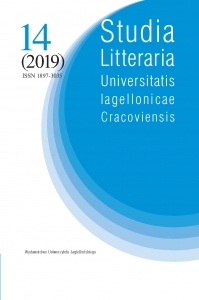
Sándor Kányadi in his poetic cycle Heretic Telegrams enters into an intertextual dialogue with Zbigniew Herbert’s output. This article attempts to interpret those poems which contain an autothematic reflection on literary creation, artistic expression, ways of narrating or the role of a poet in shaping collective consciousness. Kányádi establishes the opposition of fable and novel, presenting them as literary genres belonging to separate traditions, based on different perceptual patterns. These theses are accompanied by direct allusions to Zbigniew Herbert’s works, what naturally leads to the adoption of comparative literary methods.
More...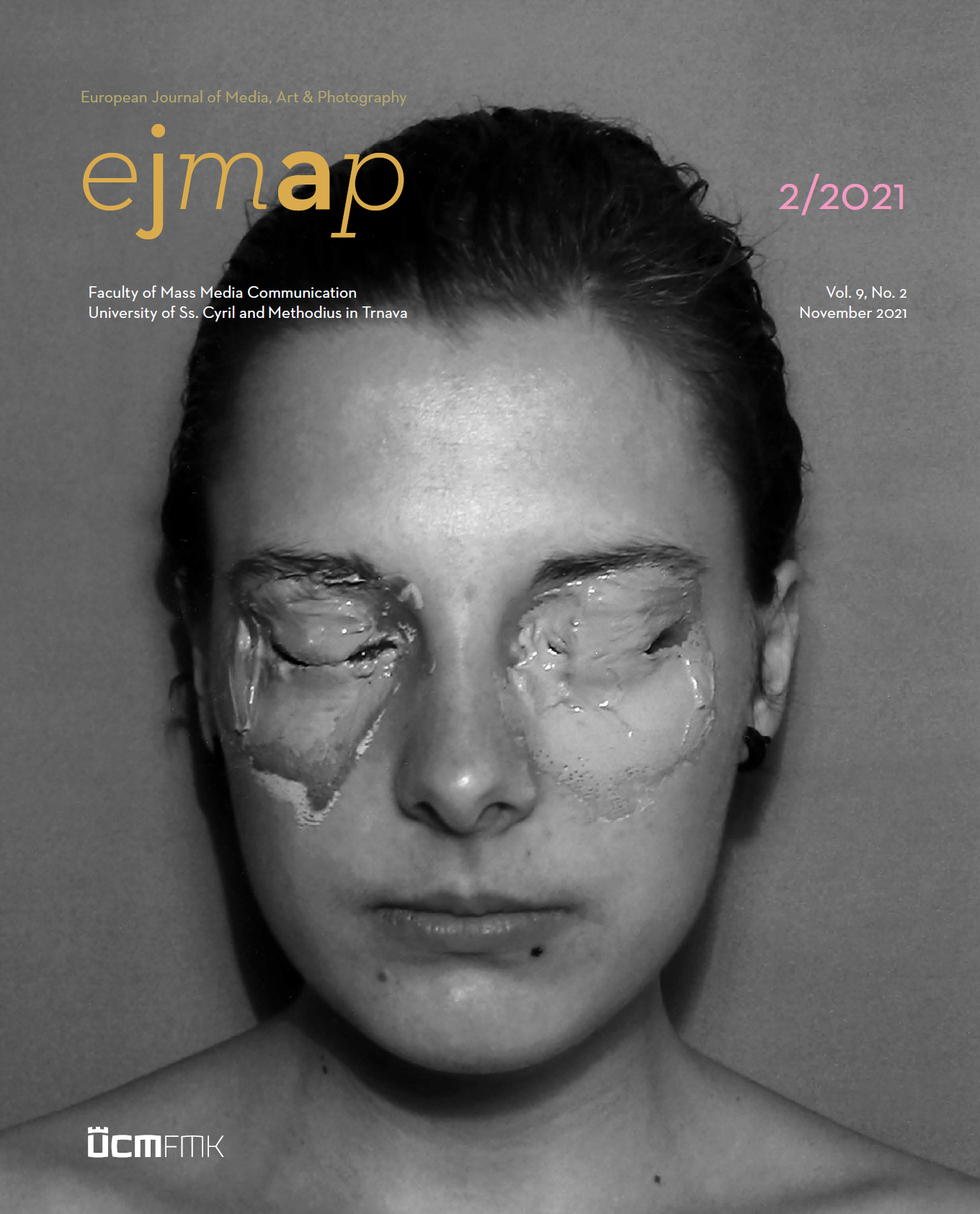
The paper points out the existence of the Slovak poetic word in presentday Hungary. It aims to identify the themes, creative procedures, methods and means of expression used in the Slovak poems by Imrich Fuhl. Based on a methodological basis, it follows the specific attributes of the complex being of the individual in this chronotope. It puts a special emphasis on those poems that are supported by visualization in one way or another inhis two published poetry collections. It characterizes the connection between Fuhl‘s poetry and selected visual concretizations of his texts. In addition, individual prototexts follow not only the intricate fates of a multicultural lyrical subject, but also its natural, universal, specific objectifications. With the gradual interpretation of these forms, Fuhl‘s (at that time natural) youthful temperament is also at the forefront. In such a perception, the poetically depicted – even oxymoronic – world is altered, developed, perfected, but also criticized, dishonoured, reduced: until (in a certain existential and cultural sense of the word) it degenerates. Calligrams, icons, parodies, and visual “materializations” are also mentioned as multidimensional poetic objects of these processes. The contribution also uses specific excerpts from the originals, respectively metatexts of experts in the field, which actually illustrate the way of thinking. The result and contribution of the text is the presentation of generally valid but also specific features of the author and his extraordinary literary work in given geographical and culturalcoordinates.
More...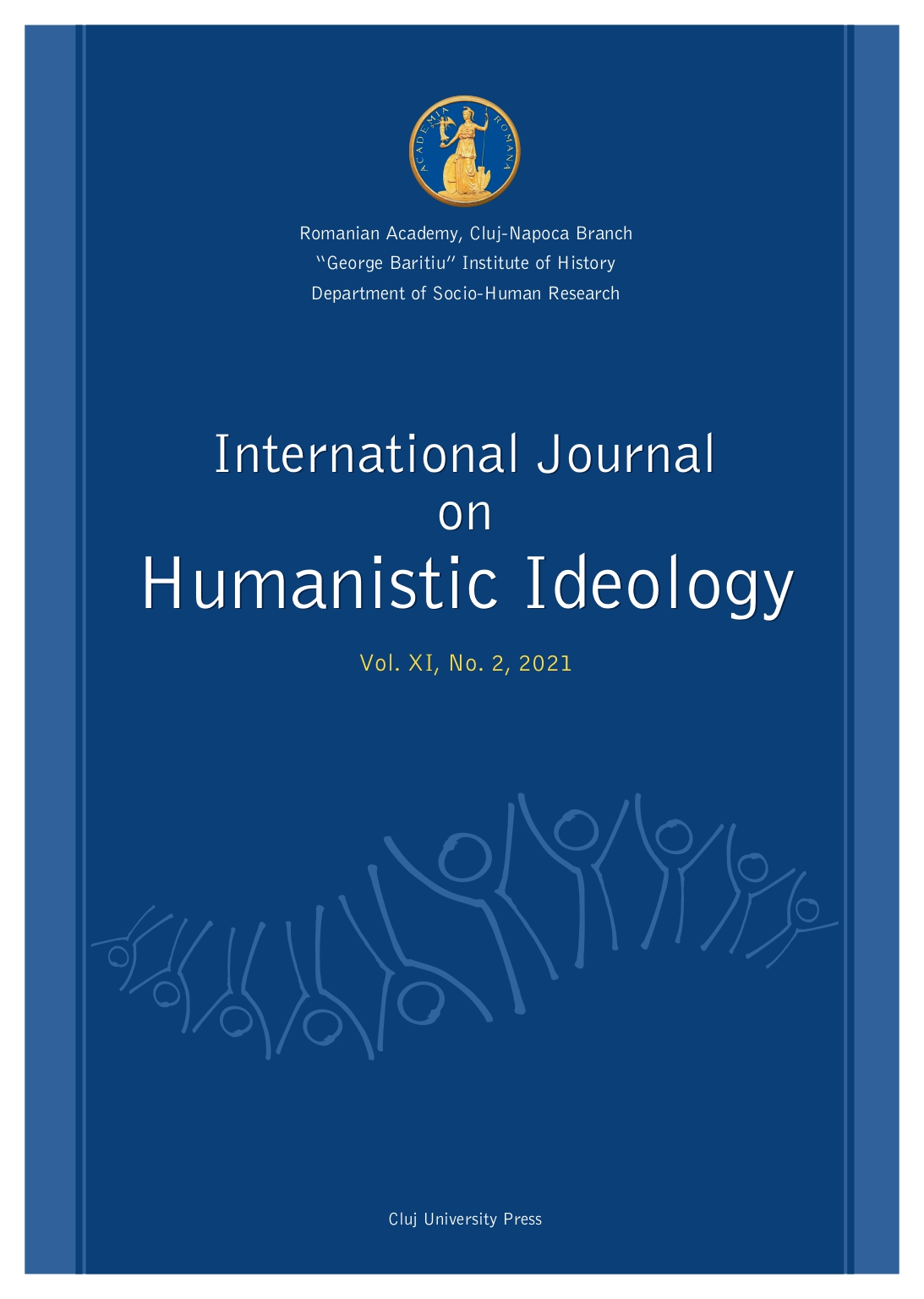
This essay will try to define the beginnings and contemporary events of Hungarian Kierkegaard research, but it must be made clear that we can only examine the most significant works written about Kierkegaard. Before the Second World War, Hungarian culture and intellectual life were closely linked to German intellectual life. Therefore, the reception of Kierkegaard’s philosophy in Hungary can only be discussed regarding the period coming after the publication of his works in German. Moreover, it is an important fact that Kierkegaard became known to European culture through his German reception. It must be said that studies on Kierkegaard before the Second World War were probably deeper and more detailed than they were after the war. The 1980’s and 90’s saw a rebirth of the reception of Kierkegaard, mainly due to political changes going on in Hungary.
More...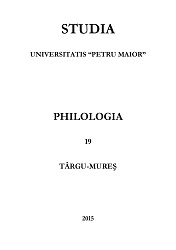
The article discusses the concepts of interior exile, dissidence and nostalgia starting from the ideas of John Neubauer, attempting to draw similarities and typologies in the larger picture of 20th century European political and cultural immigration. The cases of Central-East European writers such as Thomas Mann, Frank Thiess, Imre Kertesz or Ferenc Fejto or the Russians Victor Şklovsky and Joseph Brodsky (offered as examples by Svetlana Boym) are considered relevant.
More...
The article describes the development of Soviet and Hungarian science fiction (SF) in connection with the scientific and technical achievements as well as ideological changes in the USSR and Hungary. SF is considered as a literary genre with utopian and dystopian elements and as a form of socio-philosophical reflection in the context of social imagination. The research is focused on identifying both general aspects of the development of SF literature and related institutions (magazines, amateur associations) in the USSR and Hungary, and the specifics of their existence in these countries.
More...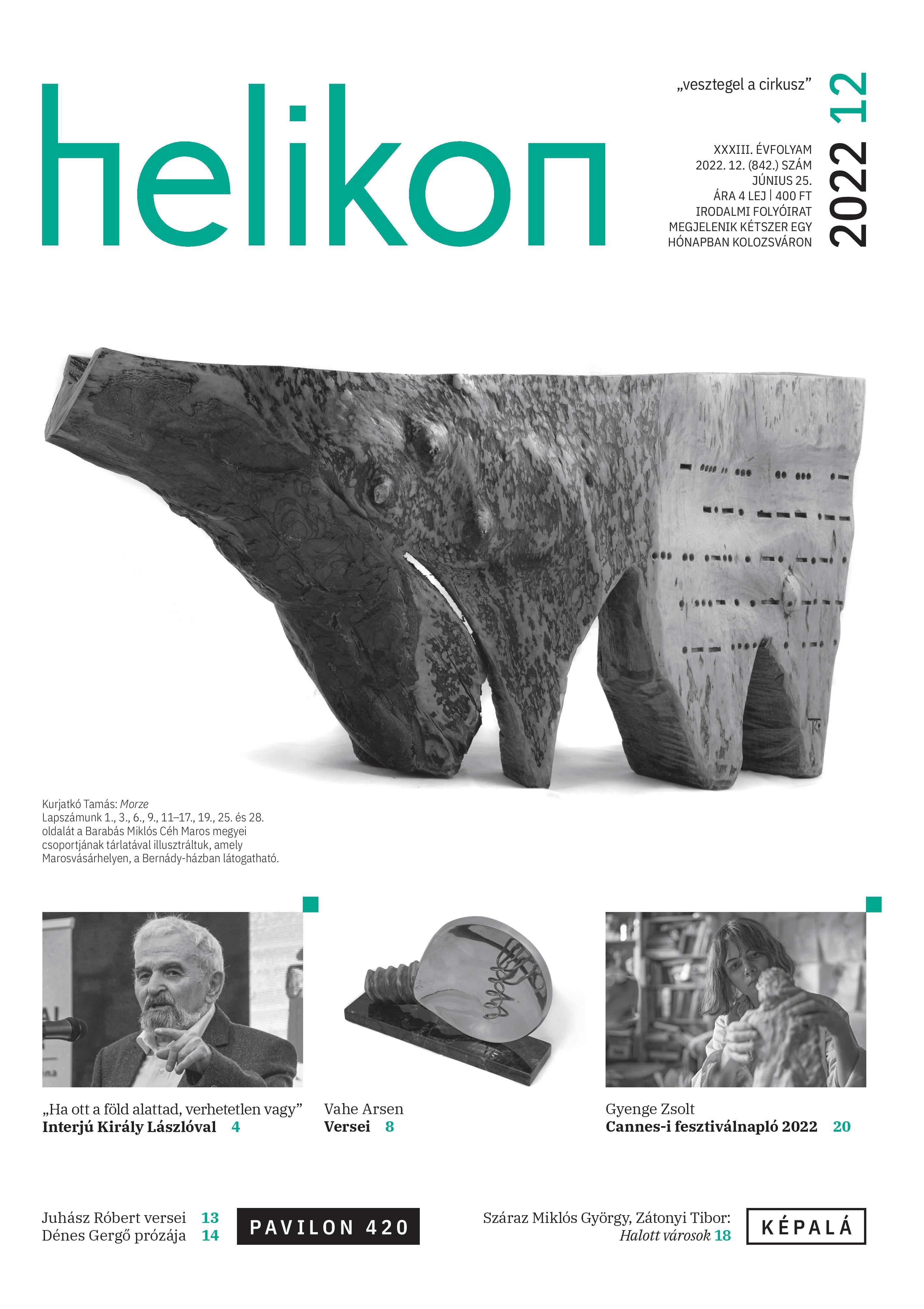

The vast field of history(ies) connected with the geopolitical space of Central Europe has been written and modified, or simply deleted and reinvented several times. Populations that have been under the domination of great empires for centuries (Ottoman, German, Russian and Austrian) have borrowed from each other not only customs and traditions, but also a new mentality and a new manner of judging things. Little by little, the works of literature and various authors of many small countries were raising their own voices to create a discursive consistency. Many texts from decades ago are nowadays – besides being literary samples – also credible documents about a particular social behaviour. With making these cultural, social and political issues more visible for the public, important Central – European novelists used to create, during decades, a major cultural project about understanding the multiple factors of crisis in Europe. As a result, authors like Franz Kafka, Herman Broch, Danilo Kiš, Bruno Schulz, Robert Musil, Paul Celan, Milan Kundera were setting literary lines and terms to clarify a high range of subtle phenomena regarding politics and mentalities, dominating the space of Old Europe. Suggesting a new epic model, literary subjects directly related to the political and social collapse, a different style, and a different textual architecture, these writers were imprinting the reader’s mind with reflecting on a new epic pattern: the split of identity under the horrible effect of war and then under the political repression that followed in totalitarianism. In addition, all other sensitive issues that the Central European writers prefer to write about were passed through the filters of subjectivity and each one was revealing the experience of living in a particular area of restriction, isolation and fear. By proposing an epic product focusing on imbalances, frustrations, resentments and fragile individuals, the Central European author is revealing a powerful fiction, ready to underline the desperate need of re constructing a new and maybe a better view of a Modern European Identity – through literature and culture.
More...